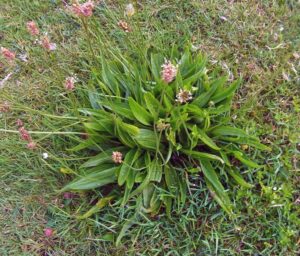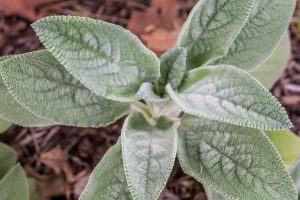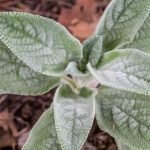
Approx. Reading time: About 10 Minutes

Introduction
A Comprehensive Guide to Foraging and Utilizing this Versatile Plant
Chickweed (Stellaria media) is a delightful and prolific wild edible plant that has been cherished for its culinary and medicinal properties for centuries. This article aims to provide a detailed exploration of chickweed, including its variants, appearance, foraging locations, culinary applications, health benefits, magical properties, and safety considerations.

Variants and Appearance:
Chickweed, a member of the Caryophyllaceae family, exhibits distinctive traits that make it easily recognizable in its various variants.
Common Chickweed:
The most common variant, Stellaria media, is often referred to as common chickweed and holds widespread recognition. It features delicate, succulent stems that sprawl along the ground, forming dense mats or carpets of greenery. The leaves of common chickweed are smooth and bright green, with an oval shape and a single prominent vein running down the center. This variant bears small, star-shaped white flowers, each consisting of five deeply cleft petals. After flowering, common chickweed produces small cylindrical seed capsules that contain numerous tiny seeds, allowing for its efficient propagation.
Mouse-ear Chickweed:
Another variant, known as mouse-ear chickweed (Cerastium fontanum), shares some similarities with common chickweed in terms of appearance. Mouse-ear chickweed also exhibits succulent stems, but its leaves possess a distinctive characteristic that resembles the ears of a mouse, giving the plant its name. These leaves are densely covered in fine hairs, which create a fuzzy texture when touched. Mouse-ear chickweed also produces white flowers, albeit with slightly broader petals compared to common chickweed.
Lesser Stitchwort:
A less commonly encountered variant, known as lesser stitchwort (Stellaria graminea), shares similar features with its chickweed counterparts. It possesses delicate stems, smooth leaves, and white star-shaped flowers. However, the leaves of lesser stitchwort are notably narrower and have a more grass-like appearance, resembling blades rather than the rounded shape of common chickweed.
Despite these variations, all the chickweed variants mentioned share common characteristics such as low-growing habit, succulent nature, and small, star-shaped white flowers. Their appearance and growth patterns make them readily identifiable during foraging excursions, allowing for confident and accurate harvests of this versatile plant.
Identifying Chickweed:
Identifying chickweed during your foraging adventures is crucial to ensure accurate and safe harvests. By paying attention to its distinct features, you can confidently differentiate chickweed from other similar-looking plants. Here are key characteristics to look for when identifying chickweed:
- Leaves: Chickweed boasts opposite leaves that grow in pairs along its tender stems. The leaves are oval-shaped, smooth, and vibrant green in color. They possess a succulent texture and often feature a single prominent vein running down the center. These leaves are tender and palatable, making them ideal for culinary use.
- Flowers: Chickweed produces delicate white flowers that are small but highly distinctive. The flowers consist of five deeply cleft petals arranged in the shape of a star. These charming blooms add beauty to the plant and serve as a helpful identification marker during its flowering stage.
- Seed Capsules: Following the blooming phase, chickweed develops into small cylindrical seed capsules. These capsules contain numerous tiny seeds, allowing for the plant’s widespread propagation. The presence of these capsules further aids in confirming the identity of chickweed during its lifecycle.
- Growth Habit: Chickweed is a low-growing plant that tends to form dense mats or carpets on the ground. It thrives in moist environments and can reach heights of 6 to 12 inches. Its sprawling nature allows it to cover large areas, creating a noticeable presence in its preferred habitats.
By familiarizing yourself with these identifying characteristics, you can confidently differentiate chickweed from other similar plants during your foraging endeavors. Remember to consider factors such as leaf arrangement, leaf shape, flower appearance, seed capsules, and growth habit to ensure accurate identification. Such knowledge empowers you to effectively locate and harvest this versatile plant for culinary and medicinal purposes.
Habitat and Foraging Locations:
Chickweed’s adaptability and resilience make it a versatile plant that can be found in a variety of habitats, providing ample opportunities for foraging. Understanding its preferred environments will enhance your chances of locating and harvesting this abundant plant. Here are some key insights into the habitat and foraging locations of chickweed:
- Moist, Fertile Soil: Chickweed thrives in moist and fertile soil conditions. It favors areas with adequate moisture, but not overly waterlogged. Locations with good drainage and rich organic matter are ideal for its growth. It is commonly found in gardens, lawns, fields, and meadows where the soil retains moisture and nutrients.
- Diverse Habitats: Chickweed is adaptable and can be found in various habitats. You may encounter it in woodland edges, along forest paths, and in disturbed areas such as roadside verges or abandoned lots. It prefers areas with ample sunlight but can tolerate partial shade as well.
- Cool-Season Plant: Chickweed is a cool-season plant, emerging in early spring and continuing to flourish until late autumn. It is often one of the first green plants to emerge after winter, heralding the arrival of spring. Its ability to thrive during cooler temperatures makes it a valuable foraging resource during the shoulder seasons.
- Global Distribution: Due to its adaptability and ability to grow in diverse conditions, chickweed can be found in many regions worldwide. Whether you’re in North America, Europe, Asia, or other temperate regions, chances are you’ll come across chickweed in your local foraging expeditions.
When exploring for chickweed, keep an eye out for its low-growing habit and dense mats or carpets that cover the ground. Moist and fertile areas, such as gardens, lawns, fields, and disturbed sites, are prime locations to discover this resilient plant. Be mindful of local regulations and avoid foraging in areas that may have been treated with pesticides or chemicals. With an understanding of its preferred habitats, you can embark on rewarding chickweed foraging adventures and take advantage of its culinary and medicinal benefits.
Culinary and Medicinal Uses:
Delectable Culinary uses:
Culinary enthusiasts and foragers alike appreciate chickweed for its nutritional value and versatility in the kitchen. With its mild and fresh flavor, this herb offers a range of culinary possibilities. Here are some delectable culinary uses of chickweed to explore:
- Salads and Sandwiches: The tender young leaves and stems of chickweed make a delightful addition to salads and sandwiches. Their crisp texture and mild taste provide a refreshing element to your culinary creations. Simply rinse the chickweed thoroughly, remove any tough stems, and toss it into your favorite salad or sandwich for added nutrition and a touch of vibrant green.
- Stir-fries and Sautéed Dishes: Chickweed’s succulent nature allows it to retain its shape and texture when cooked, making it a fantastic ingredient for stir-fries and sautéed dishes. Add chickweed towards the end of cooking to preserve its delicate flavor and bright appearance. Pair it with other vegetables, meats, or tofu for a nourishing and visually appealing meal.
- Vegetable Side Dishes: Consider incorporating chickweed into vegetable side dishes to elevate their nutritional value and taste. Sauté chickweed with garlic, olive oil, and a pinch of salt for a simple and flavorful side dish. You can also steam or blanch chickweed briefly to retain its vibrant color and serve it alongside roasted or grilled main courses.
- Soups and Stews: Chickweed can be a valuable addition to soups and stews, imparting its subtle flavor and enhancing the overall nutritional profile. Toss a handful of chickweed into vegetable, chicken, or lentil soups during the last few minutes of cooking. The gentle simmering will soften the leaves while preserving their delicate taste and appearance.
- Herbal Infusions and Pestos: For a unique twist, experiment with using chickweed in herbal infusions and pestos. Combine fresh chickweed leaves with other aromatic herbs like basil, parsley, or mint to create flavorful herbal teas or infusions. Additionally, blend chickweed with garlic, nuts, olive oil, and Parmesan cheese to make a vibrant and nutritious pesto sauce that can be enjoyed with pasta, bread, or as a dip.
Chickweed’s mild and versatile flavor allows it to complement a wide array of ingredients and dishes. From fresh salads to cooked preparations, its nutritional richness and delicate taste make it a valuable culinary resource for those seeking to incorporate wild edibles into their meals. As always, ensure that you forage from clean and uncontaminated areas, and thoroughly wash the chickweed before use.
Common Medicinal uses:
Chickweed’s medicinal properties have been recognized for centuries, and it has been utilized as a valuable herbal remedy for various ailments. The soothing and cooling qualities of chickweed make it particularly beneficial in the realm of natural medicine. Here are some common medicinal uses of chickweed:
- Topical Relief for Skin Irritations: Chickweed has long been employed as a topical remedy for skin irritations, including rashes, eczema, itching, and minor burns. The leaves of chickweed can be crushed and applied directly to affected areas as a poultice. The cooling and anti-inflammatory properties of chickweed are believed to help alleviate discomfort and promote healing.
- Infusions and Oils for External Use: Chickweed can be infused into oils, creams, or salves to create soothing preparations for external use. Infusing chickweed into carrier oils like olive oil or coconut oil can yield a soothing and nourishing oil blend. These infused oils can be applied topically to alleviate skin conditions or provide relief to dry, itchy skin.
- Anti-Inflammatory Properties: Chickweed is believed to possess anti-inflammatory properties, which may help reduce inflammation and swelling. This makes it potentially useful for conditions such as arthritis, joint pain, and inflamed skin conditions. Applying chickweed-infused preparations or poultices may help soothe these inflammatory issues.
- Diuretic Effects: Chickweed is also recognized for its diuretic properties, which can help promote healthy urinary tract function and alleviate water retention. It may be beneficial in cases of mild edema or as a supportive measure for urinary tract health. As with any diuretic, it is important to maintain proper hydration while using chickweed.
- Digestive Support: Some herbal traditions consider chickweed as a digestive aid. It is believed to have a gentle and soothing effect on the digestive system, potentially aiding in relieving symptoms such as indigestion, bloating, and mild gastrointestinal discomfort. Chickweed infusions or herbal teas may be consumed to support digestive health.
It is worth noting that while chickweed has a long history of traditional use, scientific studies exploring its medicinal properties are limited. As with any herbal remedy, it is advisable to consult with a healthcare professional before incorporating chickweed or any herbal supplement into your healthcare routine, especially if you have underlying health conditions or are taking medications.
Chickweed’s reputation as a soothing herb with potential anti-inflammatory, diuretic, and digestive properties contribute to its appeal as a natural remedy. However, individual experiences and responses to herbal remedies can vary, and it is important to exercise caution and seek professional advice when using chickweed for medicinal purposes.
Magical Properties:
In addition to its practical uses, chickweed holds a special place in the realm of magic and folklore. Throughout history, it has been revered for its perceived magical properties and is believed to bring forth positive energies and protective influences. Here are some of the magical associations and practices associated with chickweed:
- Abundance and Prosperity: Chickweed has long been associated with attracting abundance and prosperity. In folk magic, it is believed that carrying or wearing chickweed can help manifest financial success, growth, and overall abundance in one’s life.
- Love and Romance: Chickweed is often utilized in love spells and rituals. It is believed to have the power to kindle or enhance romantic feelings, making it a popular herb for love magic. Some traditions suggest placing chickweed beneath the pillow to inspire dreams of love or incorporating it into love potions and charms.
- Protection and Warding: Chickweed is considered to possess protective properties in various magical traditions. Carrying a sachet filled with dried chickweed is believed to provide protection against negativity, evil spirits, and ill intentions. It is also thought to create a shield of positive energy around the bearer.
- Healing and Well-Being: Chickweed’s reputation for soothing and cooling properties extends into the magical realm. It is associated with healing and promoting overall well-being, both physically and spiritually. Some believe that incorporating chickweed into rituals or spells can aid in emotional healing, stress relief, and balancing energies.
- Spiritual Cleansing: Chickweed is sometimes used in rituals and practices focused on spiritual cleansing and purification. It is thought to assist in clearing away negative energies and promoting spiritual growth and harmony. Including chickweed in ritual baths, smudging, or herbal cleansing blends can enhance these spiritual practices.
It is important to note that the magical properties attributed to chickweed are rooted in folklore and personal beliefs. The power of these magical associations lies in the intentions and energy of the practitioner. As with any magical or spiritual practice, respect and mindfulness should be exercised when working with chickweed or any other herb for magical purposes.
Remember to approach magical practices with reverence, ethical considerations, and an understanding of the cultural and historical context behind them. Incorporating chickweed into your magical pursuits can add a touch of enchantment and symbolism to your rituals, spells, and personal practices.
Safety Considerations:
Safety should always be a top priority when foraging, and this applies to chickweed as well. While chickweed is generally safe for consumption, it is crucial to follow certain safety considerations to ensure a positive foraging experience. Here are some key safety guidelines to keep in mind:
- Proper Identification: Accurate identification of chickweed is essential before harvesting and consuming it. Although chickweed has distinct characteristics, it can sometimes be confused with similar-looking plants. Consult reliable foraging guides, local experts, or experienced foragers to ensure accurate identification and avoid any potential misidentification.
- Harvesting from Contamination-Free Areas: Chickweed should be harvested from areas free of contamination, such as pesticides, pollutants, and heavy metals. Avoid foraging near roadsides, industrial sites, or areas where there is a likelihood of contamination. Choose locations away from high traffic areas and chemical applications to ensure the purity of the plants you harvest.
- Allergies and Medication Interactions: It is important to be aware of potential allergies or interactions with existing medications when consuming chickweed or any other wild plant. Some individuals may have sensitivities or allergies to certain plants, including chickweed. If you have known allergies or are taking medications, consult with a healthcare professional before incorporating chickweed into your diet or medicinal routine.
- Disclaimer Regarding Medical Safety: It is important to note that the information provided in this article is for educational purposes only and should not replace professional medical advice. While chickweed has a long history of traditional use and perceived health benefits, scientific studies on its safety and efficacy are limited. Individual responses to chickweed can vary, and it is always advisable to consult with a healthcare professional before using chickweed for medicinal purposes, especially if you have underlying health conditions or are taking medications.
By adhering to these safety considerations, you can ensure a safe and enjoyable foraging experience with chickweed. Prioritize proper identification, harvest from clean areas, be mindful of allergies and medication interactions, and seek professional medical advice when necessary. Responsible foraging practices and informed decision-making are key to enjoying the benefits of chickweed while maintaining your well-being.
Conclusion:
Chickweed, with its tender leaves, delicate flowers, and numerous health benefits, offers an abundance of culinary and medicinal possibilities. Its availability in diverse habitats and versatility in the kitchen make it an excellent addition to foragers’ repertoires. However, responsible foraging, accurate identification, and cautious use are crucial to ensure a safe and enjoyable experience. So, embrace the wonders of chickweed, both in your kitchen and in your exploration of the natural world.













